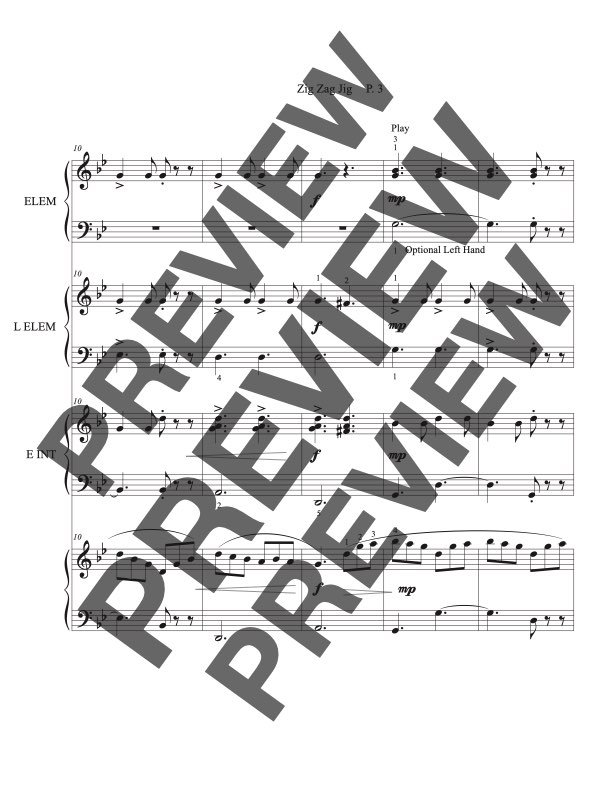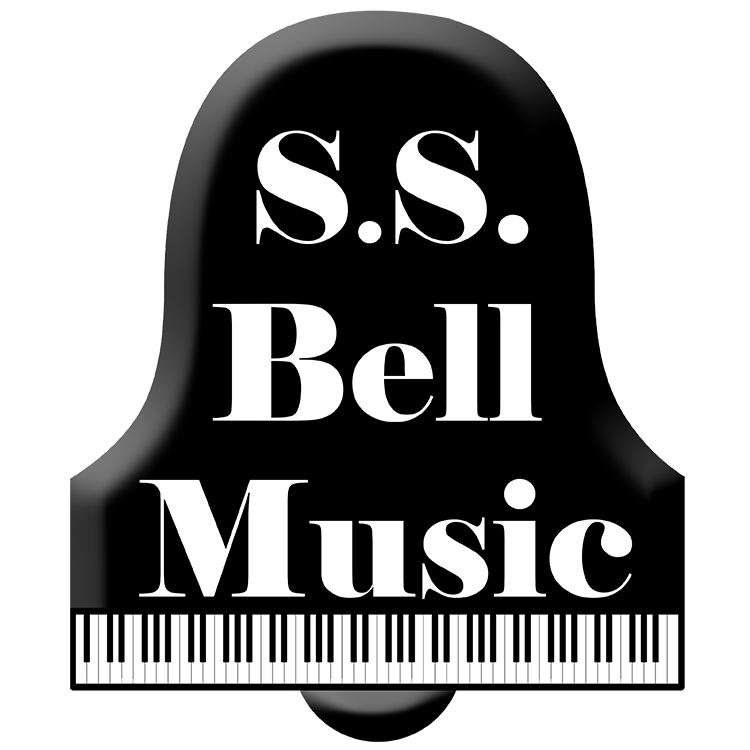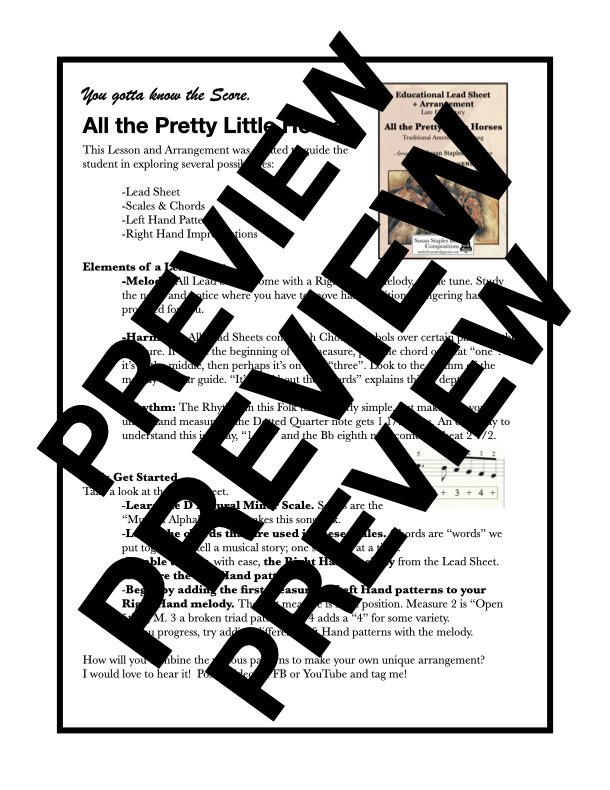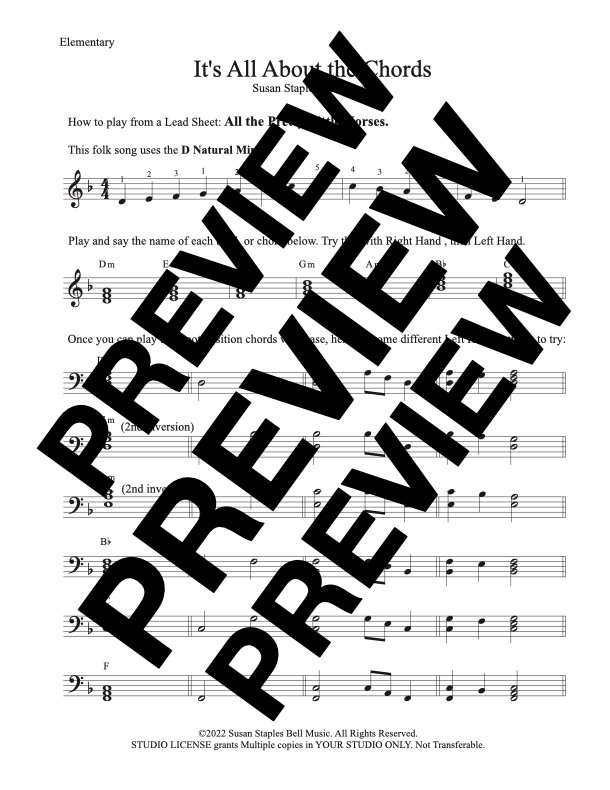 Image 1 of 11
Image 1 of 11

 Image 2 of 11
Image 2 of 11

 Image 3 of 11
Image 3 of 11

 Image 4 of 11
Image 4 of 11

 Image 5 of 11
Image 5 of 11

 Image 6 of 11
Image 6 of 11

 Image 7 of 11
Image 7 of 11

 Image 8 of 11
Image 8 of 11

 Image 9 of 11
Image 9 of 11

 Image 10 of 11
Image 10 of 11

 Image 11 of 11
Image 11 of 11












Zig Zag Jig, Rhythm + Improvisation for Multi Level Piano Ensemble
Zig Zag Jig, 6/8 Rhythm Study + Improvisation for Multi Level Piano Ensemble
Created by Susan Staples Bell, ASCAP
Here is a Multi Level Piano Ensemble arrangement that can be used in so many ways. (19 Pages)
1. 6/8 Rhythm introduction and practice- clap it, drum it, play it!
2. Improvisation exploration- you don’t need a group! Teacher can play one of the parts or use the backing track, while students explore. Or repeat the first 4 measures for a simpler pattern to explore improvisation.
3. Exciting ensemble playing.
4. Sight reading practice.
Although this is not a traditional Jig, this piece fits nicely into this genre:
The jig, a lively folk dance in triple meter, is a series of hops and steps that repeat themselves over and over again. It was popular in Scotland and northern England in the 16th and 17th centuries and in Ireland since the 18th century. It is an improvised dance performed with rapid footwork and a rigid torso.
Use the Rhythm challenge as a way to introduce 6/8 to your students. Each line presents every rhythm from the piece in a clear way. Use hand claps, drum sticks or notes to practice this. Drums can mimic the foot stomps of the Jig.
Activity: How does 6/8 time feel different than 2/4 time? (6/8 feels more flowing or swaying side to side, where as 2/4 might feel more march like). Have the students act out these motions. As students are more comfortable with these rhythm lines, have them beat independently on their line. Can they keep a steady beat and stay together?
This piece is written in G minor, using Natural Minor and Harmonic Minor. Look for opportunities to point out intervals to solidify the note relationships in the G Minor scale: lots of 3rds, 4ths, and 5ths, and arpeggios patterns.
Improvisation Solo exploration fits best in measures 5 - 20. Use 21 - 24 as a transition section to prepare for the next solo participant. Use notes in the G Minor Penta Scale or G Natural or Harmonic Minor. Notice when the F# is appropriate.
If improvising over the entire song is too difficult, try repeating the first 4 measures and improvise over that.
Mood: Exciting! Can you feel the swish of wind in your hair as you sway side to side? Exaggerate the dynamics and phrasing to help build the mood.
Optional Percussion: Add in hand claps, or drumming sticks to create different sounds. What other percussion might work here?
Make sure to grab the FREE Backing Track. Great to share with students to explore at home on their own or use in class for a low stress option.
This STUDIO LICENSE grants multiple copies in YOUR Studio ONLY. Thank you for honoring the composer’s work by not sharing with other teachers.
Zig Zag Jig, 6/8 Rhythm Study + Improvisation for Multi Level Piano Ensemble
Created by Susan Staples Bell, ASCAP
Here is a Multi Level Piano Ensemble arrangement that can be used in so many ways. (19 Pages)
1. 6/8 Rhythm introduction and practice- clap it, drum it, play it!
2. Improvisation exploration- you don’t need a group! Teacher can play one of the parts or use the backing track, while students explore. Or repeat the first 4 measures for a simpler pattern to explore improvisation.
3. Exciting ensemble playing.
4. Sight reading practice.
Although this is not a traditional Jig, this piece fits nicely into this genre:
The jig, a lively folk dance in triple meter, is a series of hops and steps that repeat themselves over and over again. It was popular in Scotland and northern England in the 16th and 17th centuries and in Ireland since the 18th century. It is an improvised dance performed with rapid footwork and a rigid torso.
Use the Rhythm challenge as a way to introduce 6/8 to your students. Each line presents every rhythm from the piece in a clear way. Use hand claps, drum sticks or notes to practice this. Drums can mimic the foot stomps of the Jig.
Activity: How does 6/8 time feel different than 2/4 time? (6/8 feels more flowing or swaying side to side, where as 2/4 might feel more march like). Have the students act out these motions. As students are more comfortable with these rhythm lines, have them beat independently on their line. Can they keep a steady beat and stay together?
This piece is written in G minor, using Natural Minor and Harmonic Minor. Look for opportunities to point out intervals to solidify the note relationships in the G Minor scale: lots of 3rds, 4ths, and 5ths, and arpeggios patterns.
Improvisation Solo exploration fits best in measures 5 - 20. Use 21 - 24 as a transition section to prepare for the next solo participant. Use notes in the G Minor Penta Scale or G Natural or Harmonic Minor. Notice when the F# is appropriate.
If improvising over the entire song is too difficult, try repeating the first 4 measures and improvise over that.
Mood: Exciting! Can you feel the swish of wind in your hair as you sway side to side? Exaggerate the dynamics and phrasing to help build the mood.
Optional Percussion: Add in hand claps, or drumming sticks to create different sounds. What other percussion might work here?
Make sure to grab the FREE Backing Track. Great to share with students to explore at home on their own or use in class for a low stress option.
This STUDIO LICENSE grants multiple copies in YOUR Studio ONLY. Thank you for honoring the composer’s work by not sharing with other teachers.



























